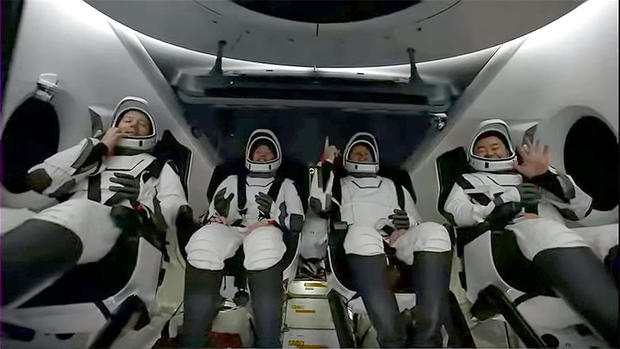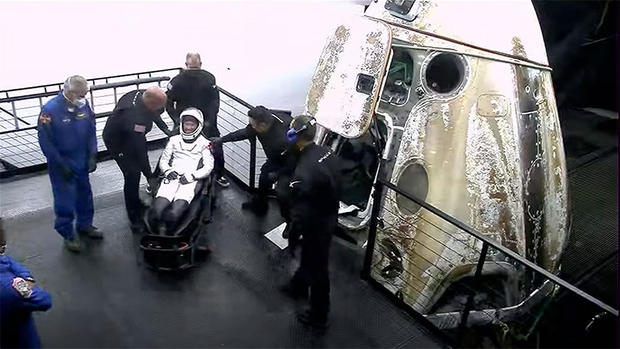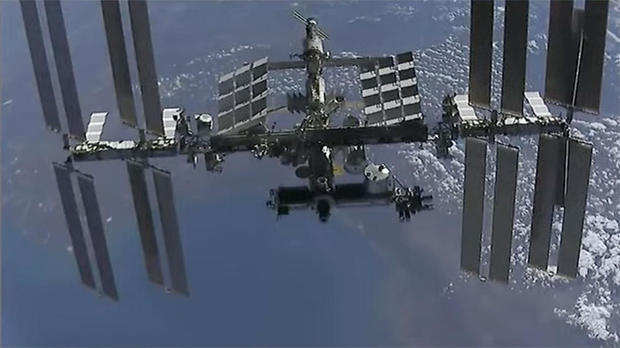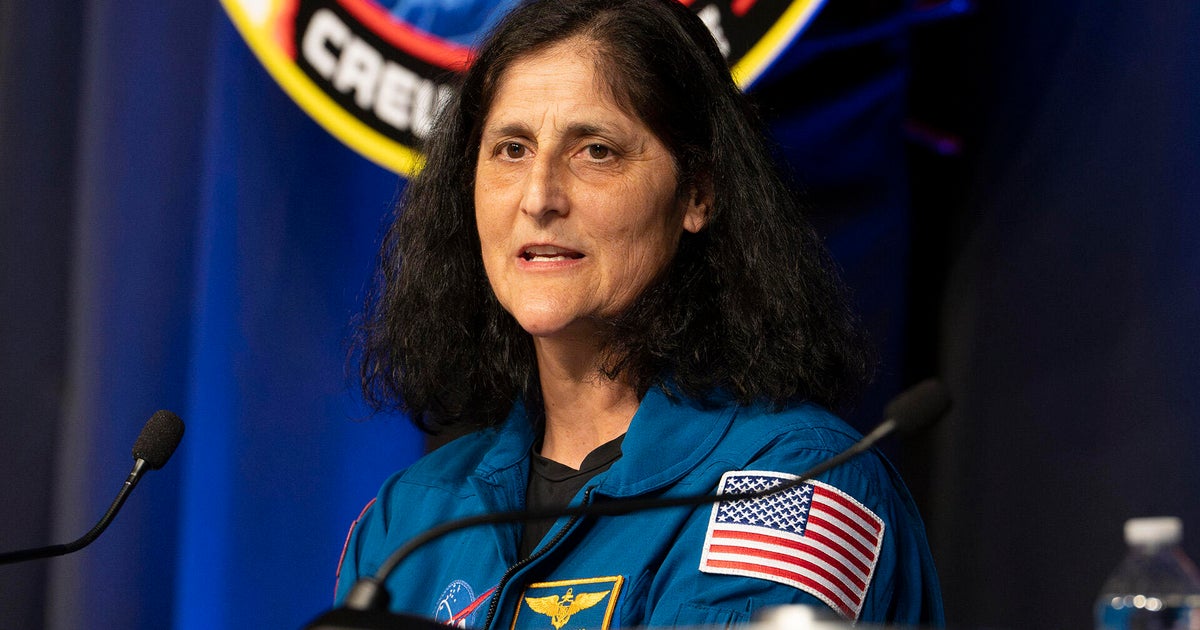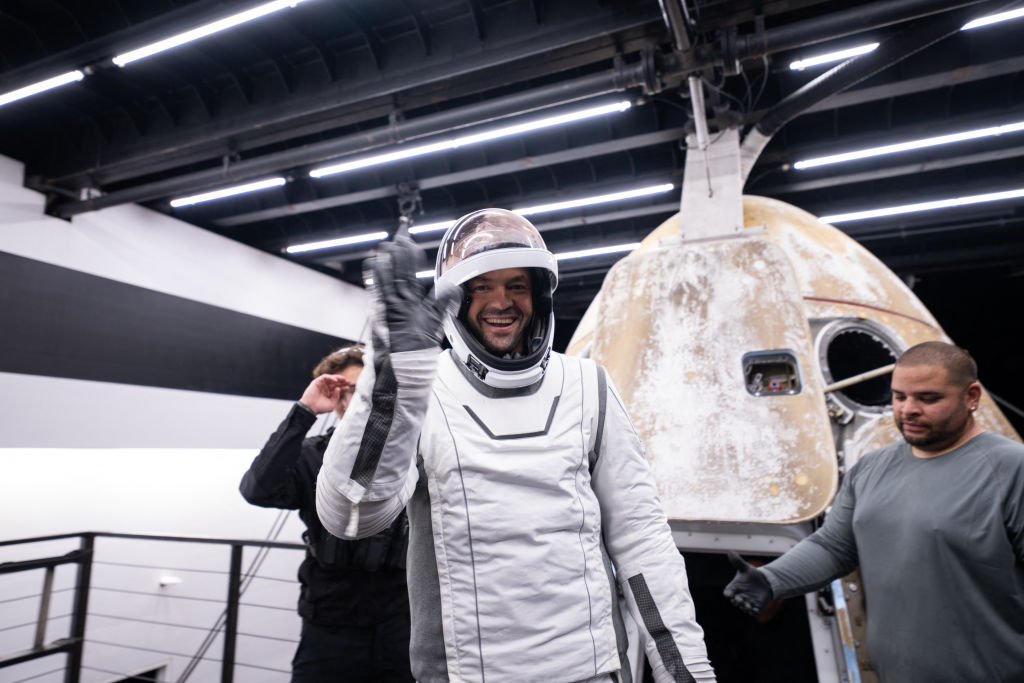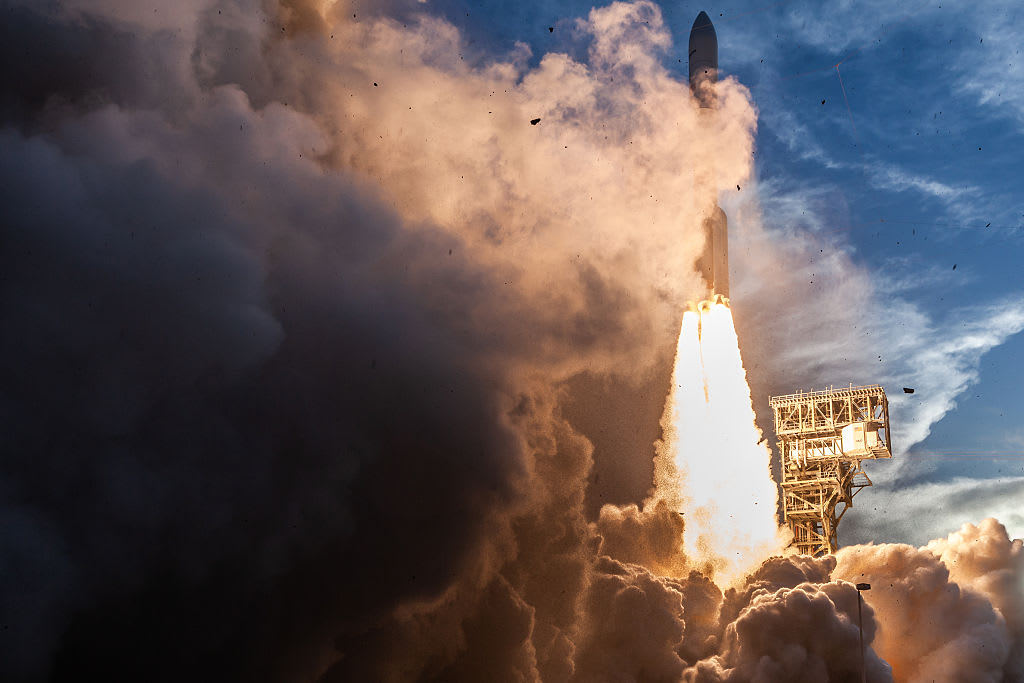Space station crew returns to Earth with spectacular night re-entry, splashdown
Two NASA astronauts and two crewmates from France and Japan strapped into their Crew Dragon spacecraft, undocked from the International Space Station and plunged back to Earth on Monday, safely splashing down in the Gulf of Mexico to close out a 199-day mission.
Descending under four large parachutes through a clear night sky south of Pensacola, Florida, the Crew-2 Dragon "Endeavour" hit the calm waters of the Gulf at 10:33 p.m. ET after a 50-minute descent from orbit. One parachute took a bit longer to inflate than the others, but NASA said all four worked as required.
In any case, SpaceX personnel stationed nearby aboard high-speed boats quickly rushed to the gently bobbing spacecraft to "safe" the vehicle while others aboard the nearby "Go Navigator" recovery ship prepared to haul the Crew Dragon aboard.
Spacecraft commander Shane Kimbrough, Megan McArthur, European Space Agency astronaut Thomas Pesquet and Japan Aerospace Exploration Agency (JAXA) astronaut Akihiko Hoshide remained inside the capsule until it was safely on deck, beginning their re-adaptation to gravity after six months of weightlessness. They were taken out of the ship on stretchers, normal procedure for astronauts returning from long-duration stays in space.
A helicopter was standing by to fly the crew to Pensacola where a NASA plane was waiting to carry them back to the Johnson Space Center in Houston.
Splashdown marked the end of a 199-day 16-hour mission spanning 3,184 orbits and 84.7 million miles that began April 23 with launch from the Kennedy Space Center atop a SpaceX Falcon 9 rocket.
The mission pushed Kimbrough's total time in space over three flights to 388 days and McArthur's total over two flights to 212 days. Pesquet has now logged 395 days in space over two flights while Hoshide's total stands at 340 days over three space missions.
Over the course of their mission, the crew helped with the arrival of five cargo ships, a new Russian lab module and a Soyuz crew ferry ship. Pesquet participated in four spacewalks, Kimbrough ventured outside three times and Hoshide once.
"It's kind of a bittersweet feeling," Pesquet told reporters Friday, reflecting on the end of the mission. "We might never come back. And it's really a magical place that flies in the sky, it's almost impossible to get to and gives you superpowers of floating and seeing the Earth and doing good things for the people on Earth.
"So to me, that's what dreams are made off. And I'm very thankful that people dreamt the ISS some time ago and then went ahead and worked hard to make it happen and to build it for the benefit of everyone."
One item the crew almost certainly missed was the space station's restroom. Because of a leaky fitting, the astronauts were asked not to use the Crew Dragon's rudimentary space toilet and instead relied on absorbent underwear for any calls of nature in the eight hours between undocking and splashdown.
"We aren't able to use the toilet on Dragon for the return trip, and of course that's sub optimal," McArthur said Friday, answering the inevitable question from a reporter. "Space flight is full of lots of little challenges, this is just one more that we'll encounter and take care of in our mission."
The trip home began at 2:05 p.m. when Endeavour undocked from the space-facing port of the forward Harmony module.
"Take care. Fly safe," Kimbrough radioed astronaut Mark Vande Hei aboard the station.
"Get home safely. It's been great being part of your team," Vande Hei replied.
Before leaving the station behind, the Crew Dragon executed a fly-around of the laboratory, allowing the astronauts to carry out a photo survey much like space shuttle crews once did on their departure.
That will give engineers on the ground and up-do-date look at various external components that are difficult to inspect in limited TV views.
"While we're going around it, we'll try to take as many pictures as we can," Pesquet said before departing. "It's not going to be easy from the Dragon because it's not designed for that. But we'll try to get the best results for people on the ground to conduct their analysis."
With the photo survey complete, the Crew Dragon dropped behind and below the station, leaving Expedition 66 commander Anton Shkaplerov, cosmonaut Pyotr Dubrov and Vande Hei behind aboard the outpost.
They'll have the station to themselves until another Crew Dragon arrives Thursday, the day after Crew-3 astronauts Raja Chari, Thomas Marshburn, Kayla Barron and European Space Agency astronaut Matthias Maurer launch from the Kennedy Space Center
They originally hoped to blast off atop a SpaceX Falcon 9 rocket on October 31, but the flight was delayed by bad weather and a minor medical issue with one of the astronauts.
In the end, NASA opted to bring Crew-2 home first, in part because their Crew Dragon was nearing 210 days in space, the certified on-orbit maximum for the spacecraft, and because forecasters predicted acceptable weather in the landing zone Monday.
NASA and SpaceX plan to hold a launch readiness review Tuesday evening to assess preparations to launch the Crew-3 Dragon "Endurance" Wednesday night at 9:03 p.m. One question on the agenda: the slow-opening parachute noted during the Crew-2 Dragon's return.
"I know folks will be wondering about that one lagging main parachute, and the team will be going off and and looking at how the loading was on the chutes and understanding that behavior," said Kathy Lueders, NASA's chief of space operations.
"It is behavior we've seen multiple times in other tests, and usually happens when the lines kind of bunch up together until the aero forces kind of open up and spread the chutes."
Even with the lag, "The thing that makes me feel a little bit more confident is that the loading and the deceleration of the spacecraft all looked nominal for us," Lueders said, "which is good news."


